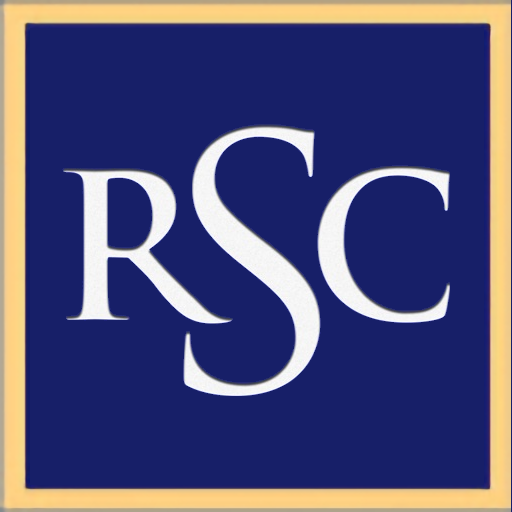
Books by Title
See the icons used for the links to the available media types for an article
Search the RSC Bibliography
Advanced Search of the RSC Bibliography
This form allows you to perform an advanced search. You only need to fill in one field below. This can be any field. If you select "not" as your match criteria, you must select at least one other field.
The BYU Religious Studies Center, in cooperation with Deseret Book, has published a book by President Boyd K. Packer featuring a significant number of his paintings, drawings, and wood carvings. The book is titled The Earth Shall Teach Thee: The Lifework of an Amateur Artist. President Packer is well known for his years of service as a teacher and leader in The Church of Jesus Christ of Latter-day Saints. Many would say that his greatest contribution has been that of a teacher. His ability to teach principles with simple everyday examples is a gift. This gift came as a natural ability but has been refined by years of study, practice, and prayer. But what most people don’t know is that President Packer has had a pastime of painting and carving. This hobby has been used to beautify his home, teach his children, and provide needed relaxation. While he was painting or carving, his mind was carving out a sermon. He has created what some describe as masterpieces. To him, they are simply an attempt to capture the beauty of nature. The whole collection of his art consists of nearly six hundred original carvings, paintings, sketches, and drawings. He has used oil, acrylic, watercolor, pastels, charcoal, crayon, ink, and pencil. The collection covers seventy-seven years of effort, beginning in 1933 at age nine. President Packer’s artistic bent and love of nature are as integrally a part of him as his spirituality, compassion, steadiness, and humor. His carvings of life-size birds in natural habitats are perhaps the apex of his artistic creations. Of more enduring worth, however, are the valuable lessons taught through his art, illustrations, parables, and example. Above all, his art expresses reverence for life. Through artwork he has shared the lessons of life with his family and with members of the Church. President Packer once wrote, “During those hours working with my hands, I pondered on the marvels of creation, and inspiration would flow. As I carved wood, I carved out talks.” ISBN 978-0-8425-2806-1
This is the Icelandic version of Fire on Ice. Who were the first Icelanders to willingly leave their beloved homeland and immigrate to the United States of America? Many people are surprised to learn these immigrants were Latter-day Saint converts eager to gather to Utah, the nineteenth-century Zion in the West. How did the message of the restored gospel come to Iceland, the land of fire and ice? What made converts adventurous enough to make this lengthy Utah journey by sail, rail, and trail, and what challenges did they encounter trying to assimilate into western American culture? These and other queries are addressed in this work, published to mark a dual sesquicentennial commemoration: the arrival of the first Icelandic Latter-day Saints in Utah, and the earliest settlement of Icelanders in the United States. ISBN 978-9979-54-746-4
Old Testament Topics > Music
Volume 1 in the Occasional Papers Series This volume contains the preliminary reports from the 1984 field campaign of the Brigham Young University excavation team at Seila in the Fayum in Egypt. As both this set of reports and those expected from later expeditions will demonstrate, the work done near the Egyptian town of Seila will have a significant impact on further studies of not only Egypt’s Old Kingdom but also the Greco-Roman era. The essays in this volume demonstrate the unusually broad approach to the project this diversity of specialists allowed the team to take. ISBN 0-8849-4680-0
Described as “the most traveled man in the Church,” Andrew Jenson had been a lifelong globetrotter since his emigration from Denmark to Utah as a young boy in 1866. Although Jenson’s lifelong interest in the whereabouts of ancient Nephite and Lamanite ruins propelled him to visit the remote areas of Latin America, he returned with a powerful impression that the Latter-day gospel should be spread south, beyond the borders of Mexico. Jenson’s letters help readers better understand some of the events and experiences that seemingly led to the twentieth-century reopening of the South American Mission in 1925 by Church leaders. This book covers this important chapter from Jenson’s life and church history, which has rarely been told in over seven decades and is heretofore virtually unknown by most Mormon historians. ISBN 978-0-8425-2851-1
This volume explores some of the seminal articles that examine Joseph Smith’s First Vision, which were written by the foremost experts who have studied it for half a century. This book preserves and shares that work. Those who study the First Vision today depend very much on the works of the scholars that are reprinted in this volume. The book includes articles by and interviews with James B. Allen, Richard L. Anderson, Milton V. Backman Jr., Richard L. Bushman, Steven C. Harper, Dean C. Jessee, Larry C. Porter, and John W. Welch. ISBN 978-0-8425-2818-4
An Eye of Faith contains nineteen thought-provoking and new essays about the following topics: ancient and modern temples, revelations to the Latter-day Saints, serving others and sharing the gospel, increasing scriptural understanding, and Church history. Jointly published by Deseret Book and Brigham Young University’s Religious Studies Center, this book was written by established Church scholars including Susan Easton Black, Richard E. Bennett, Kent P. Jackson, S. Kent Brown, Richard Draper, Alexander L. Baugh, Craig Ostler, Brent L. Top, and other notable writers. ISBN 978-0-8425-2889-4


